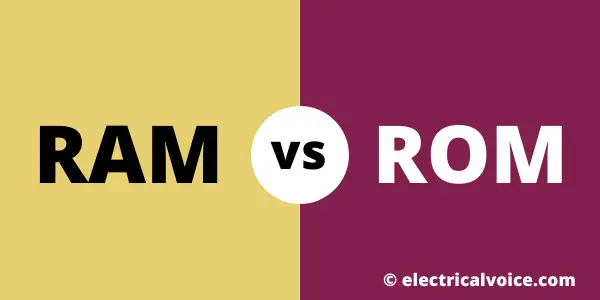Memory! It is such an important element of life. Without memory, we would never be able to find what is real in life. Without nothing to look back to, life would be at a standstill with us living the same over and over. In the same way, our computer also needs a memory where it can store all its past executions, instructions and important commands for the future. Without memory, our computer wouldn’t have been able to execute simple, normal tasks. This memory comes in chips inside our computers.
Now some of us are said to have a sharper memory i.e. they are just quick to think or react to a change. Similarly, our computers also have different types of memory systems. They are built with two main types of memory RAM and ROM. The memory specifications are given the utmost importance while choosing the best computer for us. This is important as memory defines the overall performance and speed of our system. More memory is never unhealthy so systems with better RAM are preferred most of the time.
It is important to know what is RAM and ROM and enlist the comparison between them to get a better understanding of our memory system.

RAM vs ROM
The table below provides a simplified understanding of how RAM and ROM differ from each other.
| RAM | ROM |
| Random-access memory | Read-only memory |
| Data can be read, accessed, erased or modified. | Data is read-only |
| Memory is used to store data that CPU needs for current instruction processing | Stores data that is needed to bootstrap the computer |
| Volatile | Non-volatile |
| Large and high capacity | Generally small and of low capacity |
| Speed is higher | Speed is slower than RAM |
| Access time is very short as data frequently required is stored here. | Access time is high here. |
| It is expensive | It is cheap |
| Data can be accessed by CPU | Data is from ROM is copied to RAM so as for CPU can access it. |
| Referred to as primary memory | Referred to as secondary memory |
| Used as CPU Cache, Primary Memory | Used as firmware by microcontrollers |
| Used for normal operations | Used for the starting bootup process |
What is RAM?
RAM aka. Random-access memory provides the working memory of the system and with better RAM we needn’t access slower disk arrays. RAM is what allows the users to perform everyday tasks and handle various experiences. Just as the name suggests, for RAM the usage and access of memory is random because the microprocessor needs to write changing data rapidly. It is what allows us to switch from one task to another mid-way and be able to go back to it when required.
RAM can be read and changed in any order and typically used to store working data. It stores files required temporarily and then deletes them once the PC shuts down. This makes it volatile. RAM chips can store multiple gigabytes of data.
Types of RAM
RAM can be classified into two main types: SRAM and DRAM.
1. Static RAM (SRAM) is used as a cache memory of the microprocessor chip. It is much faster and the cost of production is high.
2. Dynamic RAM (DRAM) is slower and cheaper as compared to SRAM. They are used externally to microprocessors on the motherboard and store a bit of data using a pair of transistors and capacitors which constitute a DRAM memory cell. They are used for main memory.
What is ROM?
ROM aka. Read-only memory is necessary to provide instructions to the various hardware devices components present. It is important for the BIOS(basic input/output system) and can also be used for standard data management. It can also be used to hold software for basic processes of utilities and to read and write to peripheral devices.
ROM is used to store files permanently for its functions. It has pre-recorded data and is used to boot the computer. Even after power is removed from chips it doesn’t delete the data recorded. Data stored here cannot be modified under any conditions which makes it non-volatile. Since it is non-volatile it is reliable and its contents can be easily verified. ROM can store only several megabytes of data so no computer will be able to function on just ROM.
Types of ROM
The different types of ROM available are- PROM, EPROM, EEPROM and Mask ROM.
1. Programmable ROM (PROM) – It is the form of data that is non-volatile and written after the chip has been manufactured.
2. Erasable Programmable ROM (EPROM) – Firmware can be re-written by the programmer, however, the erasing needs a high-intensity UV light, making it difficult anyways.
3. Electrically Erasable Programmable ROM (EEPROM) – Data on this non-volatile memory chip can be electrically erased using field electron emission repeatedly. Programmers can thus test the device multiple times before finishing the product. Eg. Flash memory.
4. Mask ROM – It is the data that has been written during the manufacturing of the memory chip.
The main drawback of ROM is that due to it being non-volatile, we are unable to update the firmware even in cases of malfunctioning where every chip will have to be checked and replaced one after another.
RAM and ROM are both highly essential to the proper functioning of our computer. Without either of the two, our devices wouldn’t perform the way they do now.
Author
Shriya Upasani
MIT World Peace University

1 thought on “Difference between RAM and ROM”